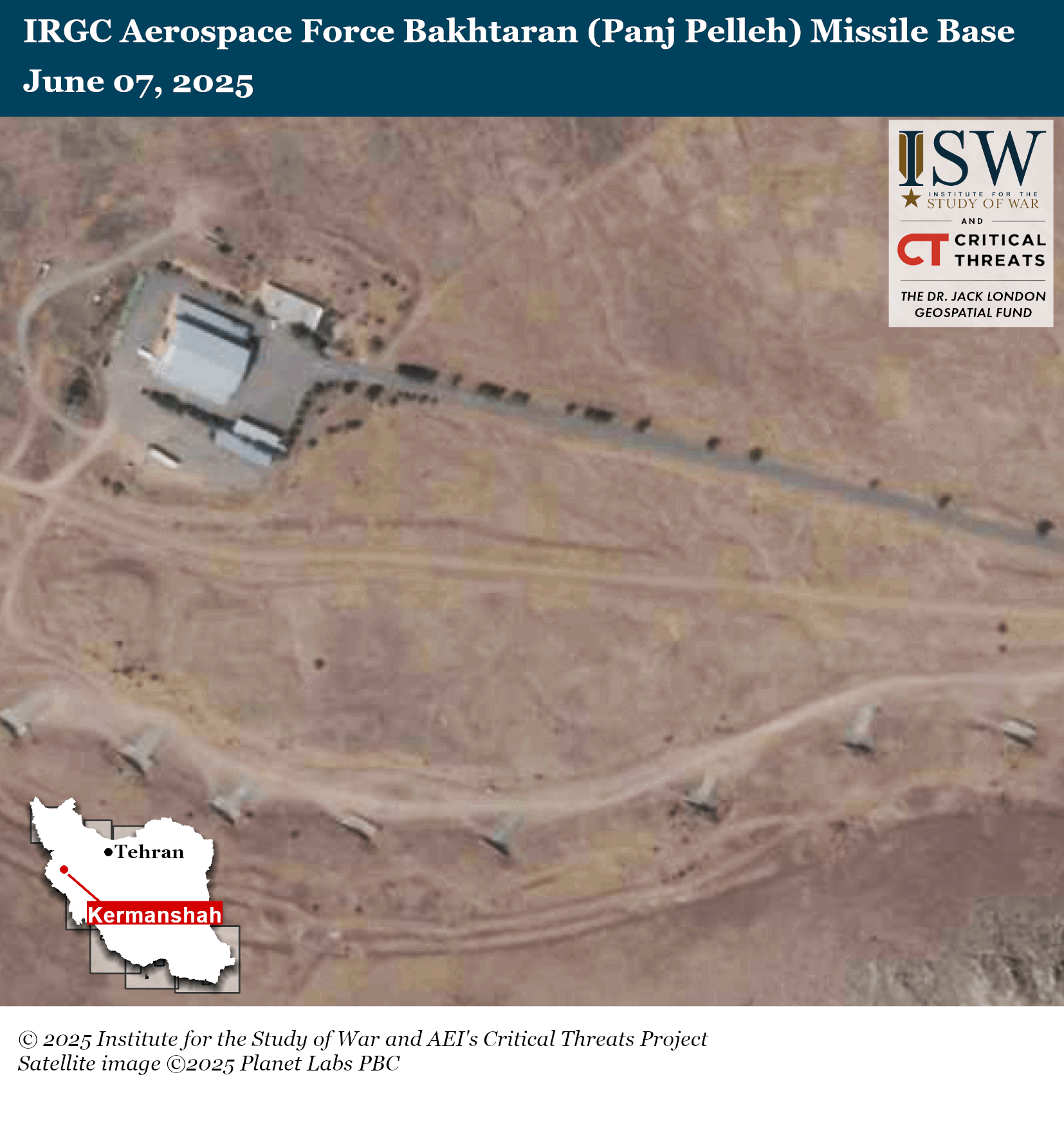US and Israeli strikes severely set back Iran’s enrichment capabilities, but Iran’s enriched uranium stockpile poses a long-term threat. The United States dropped twelve 30,000lb GBU-57 bunker buster bombs on Fordow, directly targeted points above the centrifuge cascade hall, and likely destroyed all six IR-1 and seven IR-6 cascades that produced nearly 90 percent of Iran’s 60 percent enriched uranium as of the last IAEA reporting period. IAEA Director Rafael Grossi confirmed on June 26 that the Fordow centrifuges are “no longer working” and emphasized that small vibrations can destroy them. The Institute for Science and International Security assessed that the twelve 30,000lb GBU-57s—over 180 tons of bombs—detonated inside the facility after traveling through the Fordow ventilation shafts. These bombs would have generated a blast wave far more significant than small vibrations.
Iranian enriched uranium stockpiles could pose a threat if Iran attempts to rebuild its nuclear program over the following years. Iranian officials have maintained Iran’s stated right to enrich uranium on Iranian soil despite the US and Israeli air campaign. Two unspecified officials told the Financial Times on June 26 that Iran’s highly enriched uranium stockpile “remains largely intact” following the US and Israeli airstrikes on Iran’s nuclear facilities, citing “preliminary intelligence assessments provided to European governments.” The Institute for Science and International Security also noted that Iran still retains stockpiles of 3 to 5 percent, 20 percent, and 60 percent enriched uranium, which Iran would need to enrich further to weapons-grade (90% enrichment). Uranium enrichment is logarithmic, meaning that ”the higher [the concentration of Uranium], the easier it gets” to enrich to higher levels. The destruction of so many centrifuges between June 12 and June 24 will still make enriching from 60 percent to 90 percent much slower. US and Israeli airstrikes on Fordow and other enrichment facilities could have buried enriched uranium underground, which would limit access to the material, but could not have destroyed the material. Conventional explosives cannot destroy enriched uranium. Iran may have moved some enriched uranium from its nuclear facilities to other locations ahead of Israeli strikes, according to some reports. The White House has rejected reports that suggest Iran relocated enriched material ahead of US airstrikes on June 21.
The degradation of Iran’s uranium enrichment capabilities will temporarily prevent Iran from enriching to 90 percent weapons-grade uranium, though Iran could enrich to weapons-grade if it can install surviving centrifuges at a new facility. Iran could attempt to build a simple gun-type nuclear bomb, which is similar to the US atomic bomb dropped on Hiroshima. A gun-type weapon would need at least 25kg of 90 percent enriched uranium. Iran would only be able to deliver such a weapon using an aircraft or other, more rudimentary delivery weapon, however. Iran would also still require the know-how and facilities to build such a weapon. It is unclear if Iran retains the know-how or facilities needed to build a weapon after Israel’s decapitation campaign targeting nuclear scientists and the US-Israeli strikes on nuclear facilities. A US weapons expert noted that US and Israeli strikes have “significantly” increased the time required for Iran to even build a non-missile deliverable weapon, such as a nuclear bomb.
Key Takeaways:
- US and Israeli airstrikes severely set back Iran’s enrichment capabilities, but Iran’s enriched uranium stockpile poses a long-term threat if Iran chooses to rebuild its nuclear program. The degradation of Iran’s uranium enrichment capabilities will temporarily prevent Iran from enriching to 90 percent weapons-grade uranium, though it could do so if it can install surviving centrifuges at a new facility or retains surviving centrifuges at another facility. It is unclear if Iran retains the know-how or facilities needed to build a weapon after Israel’s decapitation campaign targeting nuclear scientists and the US-Israeli strikes on nuclear facilities.
- A top Israeli official said Israel is preparing to resume operations against Iran if necessary. Israel seeks to retain its air superiority over Iranian airspace, prevent reconstruction of Iran’s nuclear and ballistic missile programs, and inhibit Iranian support to members of the Axis of Resistance. Iranian Foreign Minister Abbas Araghchi threatened to conduct retaliatory attacks against a potential Israeli strike.
- The Iranian regime continues to take counterintelligence steps that likely reflect the regime’s paranoia about Israeli infiltration. First Deputy of the Iranian Judiciary Hamzeh Khalili stated on June 27 that the judiciary will pursue Israeli “spies” and called on Iranians to inform the authorities of any dangerous or suspicious activities.
| 




 [ISW] 러시아의 공세 캠페인 평가, 2025년 6월 28일
[ISW] 러시아의 공세 캠페인 평가, 2025년 6월 28일
 [ISW] 러시아의 공세 캠페인 평가, 2025년 6월 27일
[ISW] 러시아의 공세 캠페인 평가, 2025년 6월 27일